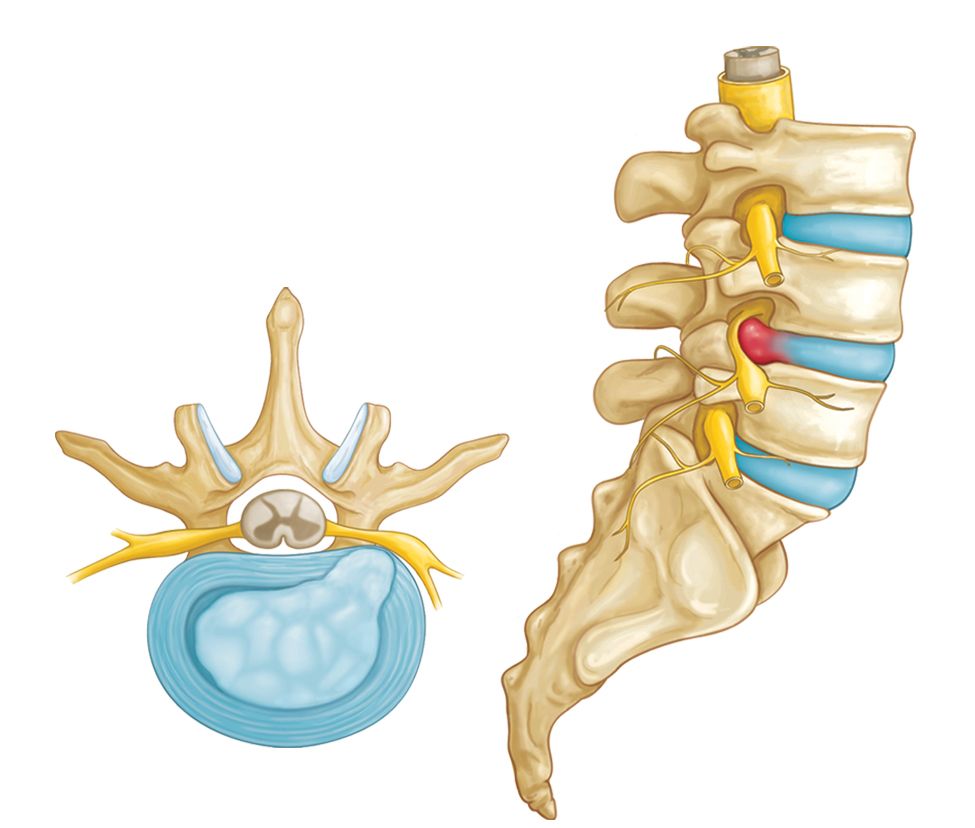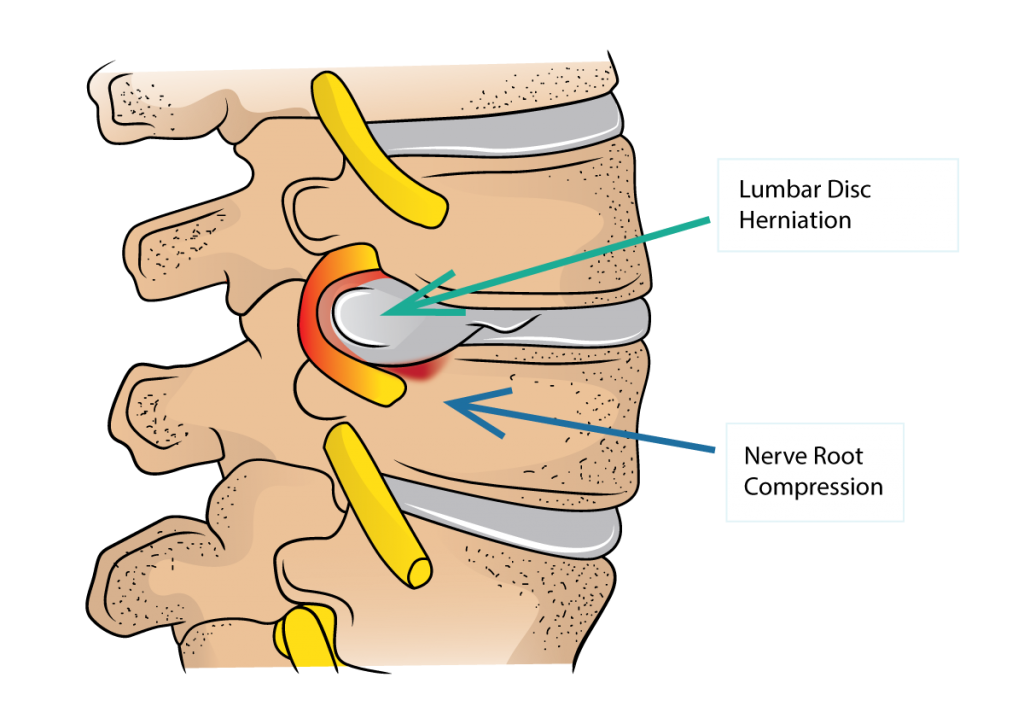Back pain is one of the most common medical complaints worldwide, and one of the leading causes of missed work days. Among the many reasons for back pain, disc herniation in the lower back stands out as one of the most common and painful conditions. At Connecticut Advanced Spine in Bristol, CT, led by Dr Ashish Upadhyay, MD, MS, we specialise in diagnosing and treating this condition via advanced medical techniques and personalised care.
Whether you’re encountering lower back pain for the first time or have worked with chronic discomfort, understanding what disc herniation is, its symptoms, and your treatment options — both surgical and non-surgical — can make a huge discrepancy in your path to recuperation.
What Is Disc Herniation?
The 24 vertebrae that make up the human spine are separated by intervertebral discs, which are soft, gel-like protectors. By serving as shock absorbers, these discs provide your back with flexibility and stability. A disc herniation, occasionally called a slipped disc, occurs when one of these discs is injured and the inner gel goes through the hard outer layer.
Because the lower back (lumbar spine) bears the greatest weight and experiences the most movement, this ailment most commonly affects this area. Lower back and leg discomfort, numbness, and paralysis may result from the ruptured disc pressing on the covering nerves.

Disc Herniation Symptoms
Depending on the location and degree of the disc herniation, patients may suffer a range of symptoms, but typically, they include:
- A painful, burning, or throbbing pain in the lower back that gets worse when you move, cough, or sit for long periods of time.
- Leg Pain (Sciatica): Pain that journeys down one leg, repeatedly along the sciatic nerve’s course.
- Particularly in the legs, feet, or buttocks, numbness or tingling may occur.
- Muscle Weakness: Having trouble moving, such as stepping on your toes or heels, or lifting items.
- Restricted Mobility: The spine evolves into a more severe or less flexible state.
It’s critical to get assessed by a doctor as soon as you notice these symptoms to avert the illness from getting worse. Long-term nerve injury and relentless pain can be avoided with early diagnosis and therapy.
Causes of Disc Herniation in the Lower Back
Disc herniation in the lower back can be caused by:
- Age-related deterioration: As we age, spinal discs lose water content and suppleness, making them more prone to tearing.
- Repetitive pressure: Heavy lifting, bending, or twisting can put pressure on the discs over time.
- Sudden Injury: The casualties or falls can result in critical disc damage.
- Poor Posture: Sitting or standing incorrectly for a prolonged period of time causes increased spinal stress.
- Sedentary lifestyle: The Weak back and body muscles cause spinal flux.
- Genetic Predisposition: Some individuals may inherit inferior disc formats.
How Is Disc Herniation Diagnosed?
At Connecticut Advanced Spine, we perform a complete diagnosis that combines new imaging technology with a complete physical examination. Dr Upadhyay and his team figure out the basis of your pain by:
- Looking at your medical record and completing a physical assessment to comprehend your symptomology, movements, and what is driving your pain.
- Ordering an MRI or CT scan for a visualisation of any potential nerve compaction and disc herniation.
- Accomplishing X-rays to investigate the bones and rule out arthritis and ruptures.
- Accomplishing Electrodiagnostic tests to identify damaged nerves and assess nerve functionality.
This comprehensive evaluation will help us formulate the most suitable and effective personalised therapy plan for each patient.
Non-Surgical Treatment Options for Disc Herniation
Non-surgical therapy can deliver relief for many individuals with lower back disc herniation. Whenever possible, we at Connecticut Advanced Spine want to help you heal and repair your mobility without the need for surgery.
1. Prescribed Exercise and Physical Therapy
The goals of supervised disc herniation activities are to reduce nerve contraction, increase flexibility, and support core muscles. Testing, stability, and posture modification techniques are a few examples of these movements.
2. Medications
Muscle relaxants and anti-inflammatory drugs can help manage pain and lessen rash in the area of the herniated disc.
3. Spinal Injections
Injections of corticosteroids can temporarily relieve pain by lowering inflammation and hives covering the afflicted nerves.
4. Lifestyle and Posture Advice
To avoid repetitions in the future, Dr Upadhyay and his associates stress the need to enhance posture, make ergonomic modifications, and rehearse good body techniques.
5. Heat and Cold Therapy
Muscle spasms and soreness can be reduced by switching between hot and cold compresses.
6. Rehabilitation and Physical Therapy
Long-term restoration therapies enhance general health and spinal stability by fixing power and mobility.
Our all-inclusive non-surgical therapy aims to improve your quality of life by delivering individualised, complete resolutions.
When Is Disc Herniation Surgery Necessary?
Some people may need disc herniation surgery, even though the prevalence of cases settles with traditional standards, when:
- After several weeks of non-surgical therapy, the pain persists.
- Muscle numbness or weakness is growing.
- The medical emergency known as cauda equina syndrome is caused by the herniation and results in either bladder or bowel dysfunction.
- Daily routines and life quality are negatively impacted.
Disc Herniation Surgery: What to Expect
Dr Ashish Upadhyay of Connecticut Advanced Spine specialises in minimally invasive spine surgery, spinal endoscopy, and traditional open surgery for complicated issues.
Here’s what patients should expect:
- Minimally invasive discectomy. A tiny incision is made to remove the herniated piece of the disc that is pushing against the nerve. This technique underestimates muscle injury, scarring, and recovery time.
- Endoscopic Spinal Surgery. A high-definition endoscope permits the surgeon to see and fix the herniated disc with a small incision. This approach enables speedier healing, reduces blood loss, and underestimates pain.
- Traditional Open Surgery Open surgery, which is reserved for severe or frequent herniations, allows direct access to the afflicted region and permits full decompression.
All surgical alternatives are thoroughly explained with patients, allowing them to make educated decisions regarding their treatment.
Recovery After Disc Herniation Operation
Recovery time is determined on the type of disc herniation surgery and the patient’s overall health. Typically, patients can expect:
- Short hospital stay: Many minimally invasive therapies are served as outpatients.
- Early Mobility: Light activities can resume in a few days, with incremental boosts.
- Physical treatment involves post-surgery exercises to regain muscle and flexibility.
- Follow-up visits need regular monitoring to ensure healing and prevent duplication.
Dr Upadhyay and his staff give ongoing focus and reinforcement to patients as they recover, permitting them to regain confidence and assurance in their activities.
Disc Herniation Exercises for Long-Term Relief
Once your pain has subsided, disc herniation practices can help avoid coming flare-ups. Here are some gentle but effective exercises:
- Pelvic tilts strengthen the abdominal and lower back muscles.
- The Cat-Cow Stretch enhances spinal flexibility.
- Hamstring times relieve immobility in the lower back.
- Partial Crunches – Boosts core stability without worrying about the spine.
- Bridges – Use the glute and core muscles to keep spinal strength.
Always do them under maintenance to ensure good process and avoid overexertion.
Living Pain-Free Again
Nobody should have to suffer from back or neck discomfort. Whether you require traditional treatment, disc herniation exercises, or disc herniation surgery, our purpose is to relieve your discomfort and return you to an active lifestyle.
At Connecticut Advanced Spine, we don’t only cure manifestations; we also improve training, confidence, and quality of life. Dr Upadhyay’s experienced care will ensure that you receive the engagement and medicine you must at all times.
If you have lower back discomfort or suspect a disc herniation, don’t delay.
Contact Connecticut Advanced Spine now to set up a consultation and begin your road to long-term treatment.


It’s concerning how many people experience back pain and miss work – this article clearly explains a significant cause. I found some interesting related information while researching, including details on geographic challenges at https://tinyfun.io/game/deltarune-geoguessr.